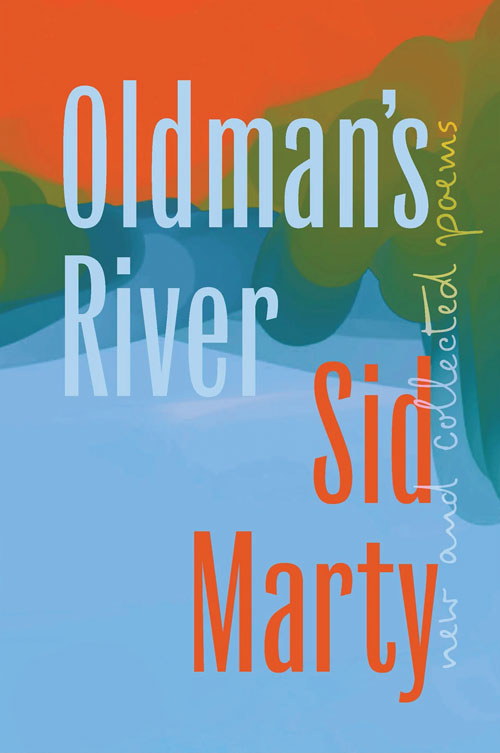The editors of Sid Marty’s Oldman’s River, Kit Dobson and Owen Percy, have done a remarkable job of producing a volume that is approachable and accessible for the casual or unfamiliar reader while also being exhaustive enough to serve as a scholarly collection. Further, Pamela Banting’s interview with Marty that closes the book provides rich context and allows his poetics to be articulated in an appropriately conversational manner. When Marty wrote his first book, Headwaters, in 1973 he was “much under the influence of the English literary tradition,” he explains in the interview. “When I began writing about the mountains, however, I soon discovered those pastoral tropes and strophes were of little use in writing about the mountain backcountry.” Mountains, it seems, refuse tranquil description but call for a breezy voice with the cadence of speech and for a poet who participates in the landscape and does not just describe it while reposed in meditation.
The language of these poems is not the language of the English garden, pruned, tidy and manicured. This is wild language, natural and untamed, a vernacular language that half reflects and perhaps half creates the environment itself. “What Coyotes Fear” opens with these lines: “In this crazy heat/ there are figures on the far hills/ that could be trees, were trees/ but these things now dance/ above Earth’s stony crest.” These figures, these dancing trees, are revealed to be the lights of the aurora borealis, though in the poem their meaning flickers, never clearly defined, until we learn the human search for meaning is unimportant. It is the coyotes’ response that matters here. Although afraid, the coyotes nevertheless “wait to ambush the moon” and the human becomes once again simply an interested observer.
The majority of the poems offer vignettes of working in nature. But these are not blue-collar poems, they are green-collar poems, the labour described not just intimately connected to the land but indicative of an ethic of stewardship, of love and respect for the land and its creatures. These are poems where word and world meet—and merge. In “Meat in the Snow,” for instance, Marty describes a truck driving through a still, winter wilderness: “Now does this driver/ give some meaning/ to the mute sweep/ of winter bush?” the poem asks baldly. It immediately answers its own question in the negative, dispelling any notion that human meaning has more value here in the natural world. Meaning in these poems is not in the word but in the world: the land gives purpose to the poetry, not the inverse.
Oldman’s River is a book that collects poems rooted in a particular place. Sweetgrass and mountain pine almost waft from the pages. Sid Marty’s poems are southern Alberta.
Jay Gamble teaches in the English department at the U of L.
_______________________________________
Click here to sign up for our free online newsletter.


